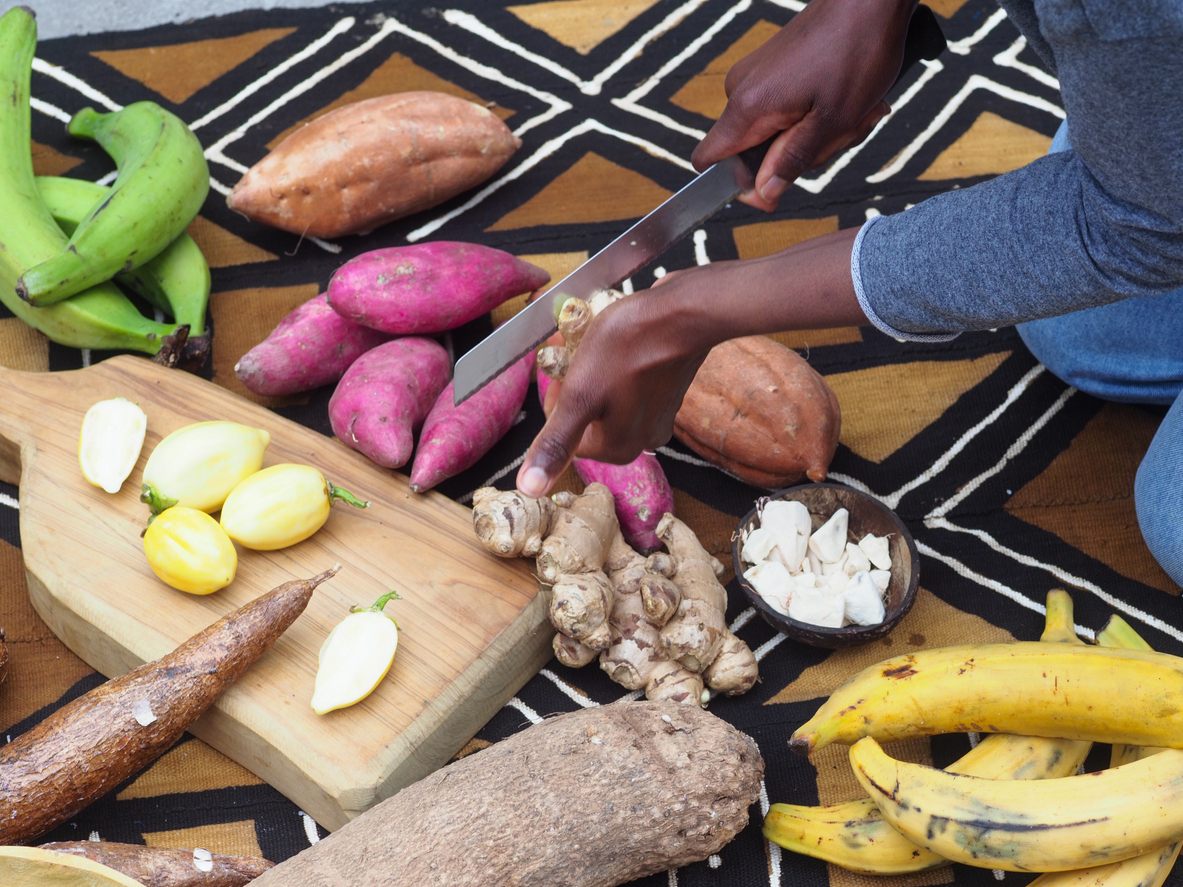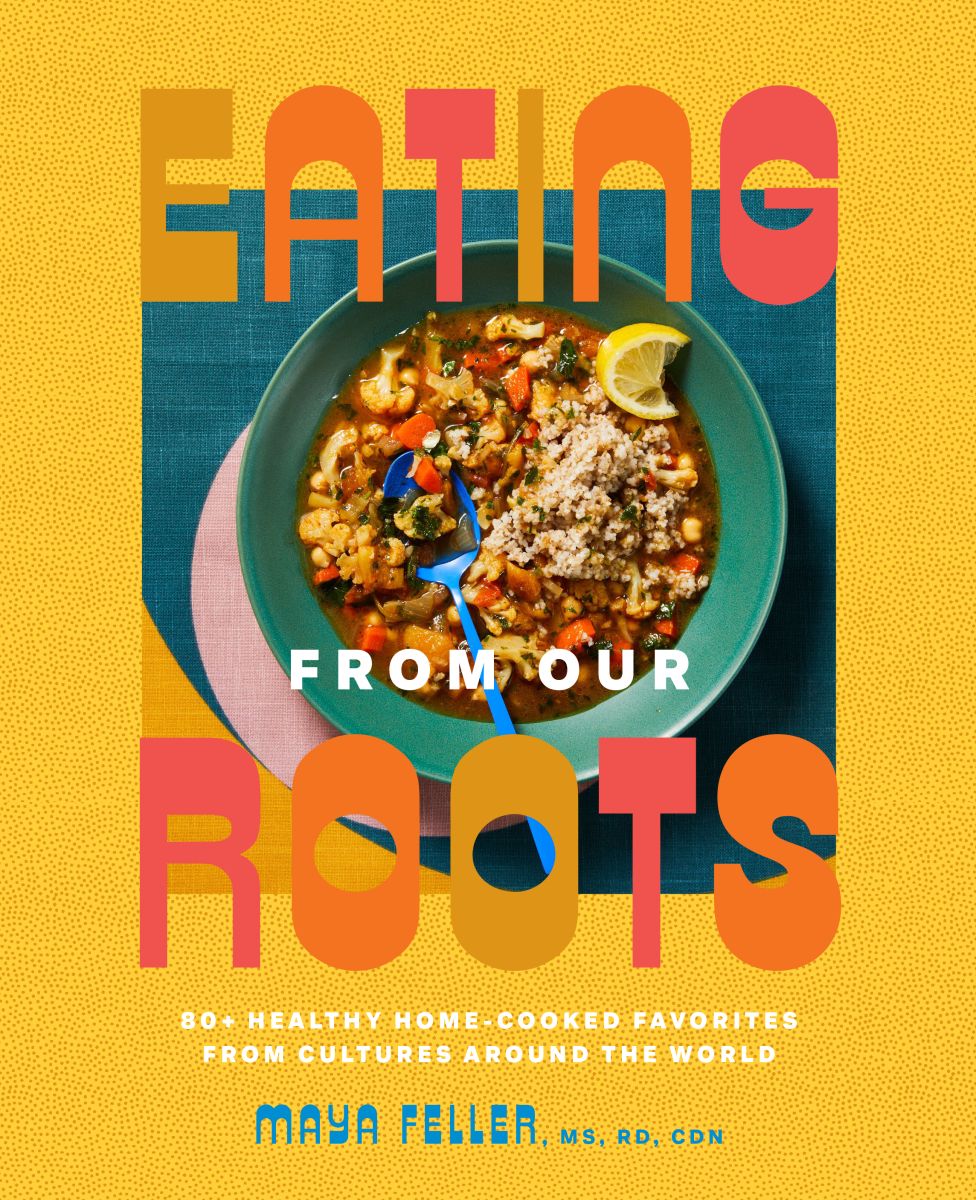Jamaican Ital Stew
By Susannah Chen
.jpg) Registered dietitian Maya Feller explains how a plant-based stew from her cookbook, “Eating From Our Roots,” is proof that it’s possible to enjoy starchy vegetables without blood sugar spikes.
Registered dietitian Maya Feller explains how a plant-based stew from her cookbook, “Eating From Our Roots,” is proof that it’s possible to enjoy starchy vegetables without blood sugar spikes.
This vegan and gluten-free Afro-Caribbean stew recipe comes from “Eating from Our Roots,” a cookbook written by registered dietitian nutritionist and inclusive nutrition advocate Maya Feller. The book is an ode to wholesome and satisfying dishes inspired by foodways around the world – think Jamaican coconut bake, Peruvian ceviche, Scandinavian seeded crackers, and more.
The vegetables featured in this stew are all staples of Ital cuisine, or the plant-based eating pattern of the Rastafarian movement. They are also cornerstones of the African Heritage Diet, a way of eating that is based on the healthy food traditions of people with African roots. The African Heritage Diet largely centers around dishes common in Africa, the Caribbean, South America, and the American South, and at least one randomized study showed that Hispanic and Black adults with diabetes who maintained a traditional Caribbean starch dietary pattern had a more healthful dietary pattern than those who followed other diets.
Here, plantains, tomatoes, corn, pumpkin, and okra are infused with the island flavors of coconut milk, habanero, lemon-lime, and cilantro. They also happen to be a plentiful source of of fiber, vitamins B and C, potassium, and heart-healthy fats.
"Green plantains contain resistant starches that have been studied and are slowly digested resulting in less of an after-meal glucose increase," Feller said. "Research has also found that okra, a flavonoid-rich fruit also in the stew, has anti-hyperglycemic effects in patients with diabetes.”
How to enjoy this Jamaican Ital Stew without worrying about blood sugar spikes
 While it is recommended that people with diabetes or prediabetes be mindful when consuming higher-starch vegetables, Feller maintains that one can still keep blood glucose in range while consuming starchier vegetables like plantains.
While it is recommended that people with diabetes or prediabetes be mindful when consuming higher-starch vegetables, Feller maintains that one can still keep blood glucose in range while consuming starchier vegetables like plantains.
“Ital stew contains a combination of fiber-rich plants that have varying degrees of digestibility,” she said, adding: “Together, they enter the bloodstream slowly and produce less of a rapid increase in blood sugars.”
While no blood glucose response is the same between two people, Feller does have general tips for regulating blood sugar when enjoying starchy vegetables like plantains, sweet potatoes, yucca, and more.
Tip #1: Focus on foods high in resistant starch.
Some of the vegetables of this Ital stew recipe are rich in a particularly healthy type of starch.
“Green plantains are a resistant starch, therefore digested further down the GI tract,” Feller explained.
Resistant starch, which is also present in the split peas that star in this stew, is a type of carbohydrate that withstands digestion in the small intestine and doesn’t break down into sugar as quickly as a result. In addition, as the fibers in resistant starch ferment, they act as a prebiotic, supporting gut flora.
Some categories of foods high in resistant starch include the following:
-
Partially processed seeds and grains, such as brown rice and quinoa
-
Unripe starchy vegetables, such as green plantains, raw potatoes, and underripe bananas
-
Certain foods that have been cooked and then cooled before consumption, such as leftover rice or potatoes
Studies have shown that resistant starch improves post-meal blood glucose, particularly if the starch is one of the first or second categories mentioned above.
Tip #2: Pair starchy vegetables with a serving of protein.
 “People living with diabetes should be mindful of the pairing as well as the quantity consumed,” Feller (pictured at right) said.
“People living with diabetes should be mindful of the pairing as well as the quantity consumed,” Feller (pictured at right) said.
“Pairing starchy vegetables with a protein helps to reduce the rapid absorption into the bloodstream and minimize spikes.”
As a starting serving, Feller suggested trying roughly half a green plantain with a serving of protein-rich beans or fish, or fiber-rich non-starchy vegetables such as the stew’s okra and tomatoes.
Tip #3: When enjoying starchy vegetables, be mindful of portion sizes.
It’s important to note that on the other hand, pairing plantains with other grains or starch – even other starchy vegetables – will likely produce a more rapid rise in blood sugars.
“Pairing plantains with grains and other starchy vegetables will likely produce a more rapid increase in blood sugars, so be mindful of portion sizes,” Feller points out.
Tip #4: Factor in time for a little post-meal movement.
Building in activity – even a little bit of it – after eating a plantain- and corn-heavy meal like Ital Stew is another way to avoid jumping on the blood glucose roller coaster. It doesn’t have to be anything complicated.
Feller recommends a simple 10-15 minute brisk walk: “Moving after a starch heavy meal helps to mobilize and utilize sugars in the bloodstream – this too helps minimize spikes.”
Recipe Details: Jamaican Ital Stew

Adapted from "Eating From Our Roots" by Maya Feller
Active time: 30 minutes
Total time: 1 hour 15 minutes
Makes: 4-6 servings
Total carbohydrates: 39 grams per serving
Recipe Notes
“Rastafarianism is a faith-based movement steeped in politics and encompasses much more than the stereotype of people with dreadlocks who listen to reggae. Ital is the core of the whole foods-based vegetarian eating patterns that Rastafarians follow,” Maya Feller writes in her recipe headnote for this nourishing stew. “Ital food is said to contain the vital and beneficial essence of plants. This Ital stew is literally loaded with a variety of nutrient-rich plants.”
Ingredients
-
1 yellow onion, diced
-
2 scallions (white and green parts), thinly chopped
-
3 cloves garlic, thinly sliced
-
2 teaspoons avocado oil
-
3 sprigs fresh thyme
-
4 bay leaves
-
1 (15-ounce) can full-fat coconut milk
-
5 cups low-sodium vegetable broth
-
2 cups pumpkin, cut into 2-inch cubes
-
1/2 cup split peas
-
1 ear of corn, cut lengthwise into 2-inch pieces
-
2 green plantains, cut into 2-inch pieces
-
2 Roma tomatoes, coarsely chopped
-
1 teaspoon kosher salt
-
Juice and zest of 2 lemons
-
1 cup okra, cut into 2-inch pieces
-
1 habanero pepper
-
Lime wedges, for garnish
-
1 bunch fresh cilantro, torn, for garnish
Instructions
-
In a large heavy-bottomed pot over medium heat, place the onion, scallions, garlic, and oil. Cook for 3 to 5 minutes, stirring occasionally and taking care not to burn the garlic. Add 1 cup of water and cook for an additional 5 minutes.
-
Add the thyme, bay leaves, coconut milk, broth, pumpkin, and split peas, and cook uncovered over medium-high heat for 8 minutes. Next, add the corn, plantains, tomatoes, salt, and lemon juice and zest, and cook for 30 minutes.
-
Add the okra and habanero and cook for 15 to 20 minutes.
-
To serve, spoon the stew into a bowl and garnish with a wedge of lime and fresh cilantro.
Estimated nutritional information per serving (1/6 recipe): 337 calories, 20 g total fat, 39 g total carbohydrates, 9 g dietary fiber, 13 g sugars, 0 g added sugars, 8 g protein.
Recipe from EATING FROM OUR ROOTS. Copyright © 2023 by Maya Feller. Photography copyright © 2023 by Christine Han. Published by goop Press/Rodale Books, an imprint of Penguin Random House, LLC. Reprinted with permission.








